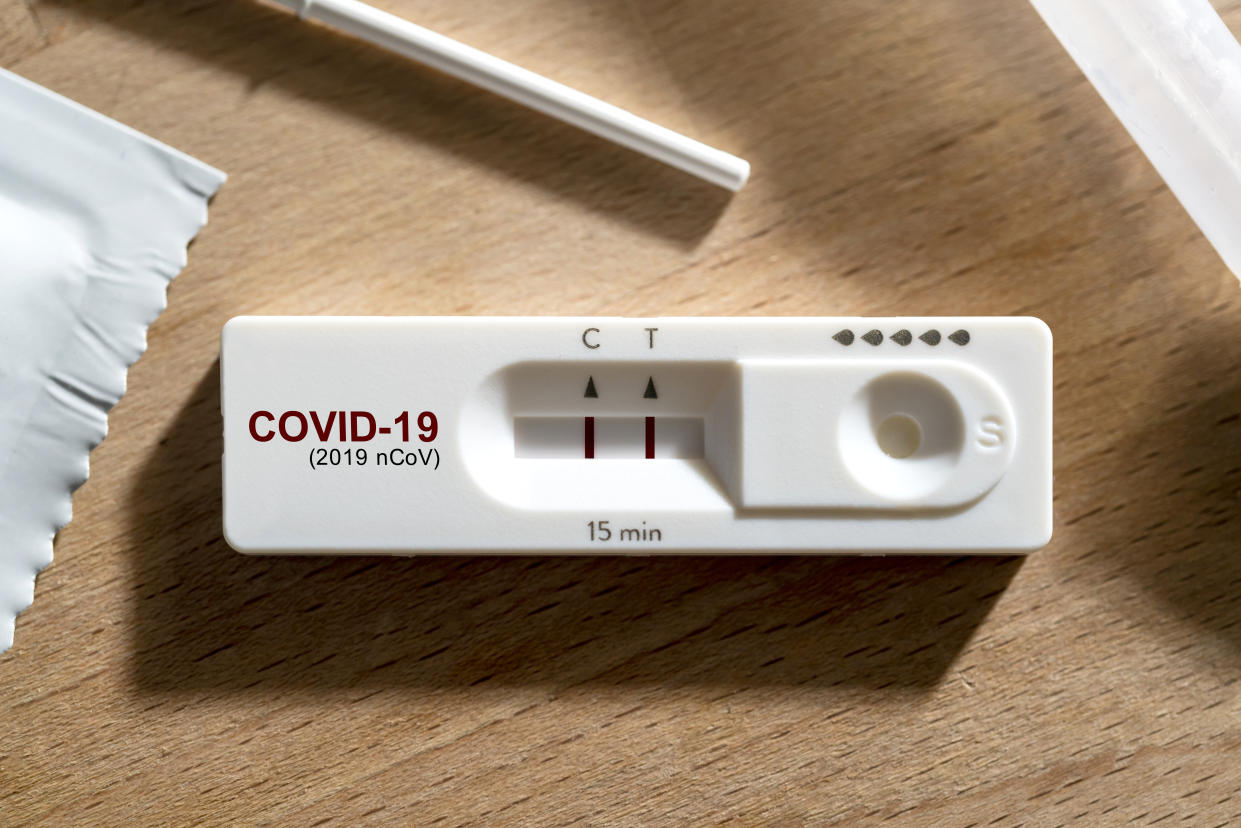The CDC has dropped its 5-day COVID isolation guidelines. Here's why — and what's changed.

The Centers for Disease Control and Prevention has dropped its isolation guidelines for people with COVID-19 infections, the agency confirmed Friday following speculation about proposed changes first reported by the Washington Post. Under the new guidelines, people would no longer be expected to isolate themselves for five days. Instead, they would be allowed to return to their normal schedules once they’ve been free of fever for at least 24 hours without taking medication. This is similar to recommendations for other respiratory viruses such as influenza and respiratory syncytial virus (RSV). Here’s more about the change — and what it means.
😷 Why is the CDC changing its COVID isolation guidelines?
There are three key reasons behind the change from five days of isolation to 24 hours after being fever-free without medication. First, the current dominant variant nationwide, JN.1, which is responsible for more than 90% of cases, doesn’t appear to be causing more severe illnesses than previous strains.
Second, at the population level, there appears to be an increase in hybrid immunity to COVID-19 because of higher vaccination rates and more exposure to the coronavirus. A CDC study found that immunity has gone up in the general population due to vaccinations and past infection, but it’s important to note that the level of immunity was lowest in older adults compared to other age groups.
“Four years since its emergence, COVID continues to spread through our communities and periodically mutate, leading to spikes in cases,” Dr. Greg Schrank, an epidemiologist at the University of Maryland Medical Center in Baltimore, tells Yahoo Life. “What has changed since the start of the pandemic is that the risk posed by COVID-19 infection is now much lower for most people.” He adds: “Despite an estimated large increase in COVID-19 disease across the U.S. starting last fall, the peak number of hospitalizations was lower than the previous two winter seasons.”
Third, there are concerns that many people weren’t following the isolation recommendations to begin with. “Currently, most people are not testing and isolating in the same manner as when the current isolation guidance was issued in 2021,” says Schrank. More recently, some states — namely, Oregon and California — had already broken away from the guidelines without appearing to have higher infections, deaths or hospitalization rates.
Recommended reading
Los Angeles Times:California relaxes COVID isolation guidance. What you need to know.
📋 When was the last time the CDC revised its isolation guidelines?
The last time the agency changed its COVID-19 isolation recommendations was in 2021, when it reduced the isolation time for infected people from 10 days to five days. At the time, the CDC stated the change was motivated by scientific research, which showed that most of the virus’s transmission happened early in the course of illness, usually in the first two days before having symptoms and during the two to three days after symptoms show up. But there were also concerns that longer isolation times would cripple the economy by keeping people out of work.
Recommended reading
🛎️ Why it matters
The changes to the CDC’s isolation recommendations matter because they would influence public behavior and could increase infection risks, especially for more vulnerable groups. Although two states have dropped the five-day isolation guidelines and it appears those guidelines aren’t being followed by everyone, there are still concerns about abandoning the recommendations altogether.
As reports of the new CDC guidelines first spread in February, many health experts expressed unhappiness with the change because it could mislead members of the public into thinking they don’t need to worry about COVID-19 anymore. Under the revised guidelines, more vulnerable people such as older adults and those who are immunocompromised may face increased risk as many more people go about their daily routines while still infectious. (This week the CDC issued recommendations that older Americans get another COVID shot this spring.)
Recommended reading
🖥️ The big picture
With the COVID-19 pandemic nearing its fifth year, the changes to the isolation guidelines are an attempt to manage a public health issue that is no longer considered an emergency. That said, experts are quick to point out that COVID continues to be a health concern, particularly for vulnerable populations.
“The COVID-19 virus can infect anyone, even after a previous illness or vaccination,” Dr. Tammy Lundstrom, chief medical officer at Trinity Health, tells Yahoo Life. “Because various strains are circulating at different times, it is possible to have multiple episodes of COVID illness.”
An infection, even a mild one, carries the risk of long COVID (also called “post-COVID conditions”), which affects about 7% of American adults. Over 8 million Americans are living with this condition, with symptoms such as fatigue, breathing problems and brain fog.
COVID-19 is also responsible for over 1.1 million deaths and 6.8 million hospitalizations over the past four years — and the numbers are rising, with over 20,000 hospitalizations and 1,500 deaths each week. Clearly, the pandemic isn’t over, and experts say it’s unwise to pretend that it is, noting that it’s still important to take steps to control COVID, just as people should for every other serious infectious disease.
Schrank has the same advice for the public that he has shared since 2020, when the pandemic started: “Get vaccinated. If you are sick, stay home as best as possible until you feel well and any fever resolves. If you must be around others, wear a well-fitting mask to protect those around you while you still may be contagious. Staying up-to-date with vaccination is most important for vulnerable people just as it is for other infectious diseases,” he says.
Nsisong Asanga is a writer, public health physician and field epidemiologist.
This article was first published on Feb. 20, 2024, and has been updated.
